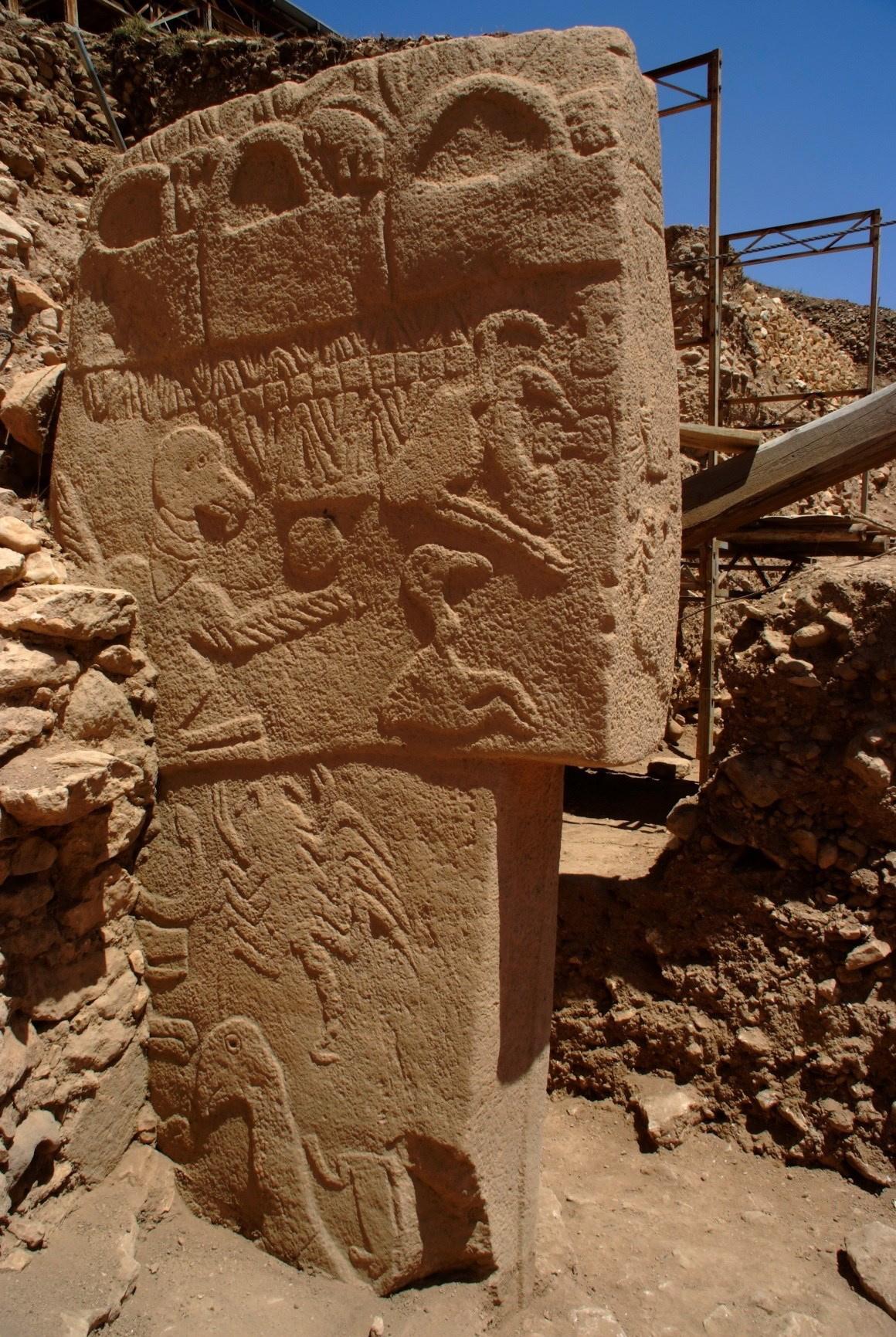Vulture Stone at Gobekli Tepe – a monument to a cosmic disaster :
Many of us are familiar with the use of ancient civilisations making monuments that in some way link up to either our calendar, the sun, moon or stars. From the stone circles in British Isles Mayan temples in Central America, ancient civilisations often focussed much of their wealth, manpower and engineering to either worship or make calculations that were vital in providing a real or imagined sense of control over their existence.
New research recently published in Mediterranean Archaeology and Archaeometry by experts at Edinburgh University have made something of a breakthrough of two stone pillars at Gobekli Tepe in southern Türkiye. Rather than trying to help predict the seasons or the motions of heavenly bodies however, it has been discovered that instead the stone carvings remember a cosmic disaster which occurred in our planet 13,000 years ago.

Markings suggest that a swarm of comet fragments hit Earth at exact same time that last great ice age struck which went on to change the entire course of human history. Great creatures such as Woolly Mammoths became extinct and changes in the climate and environment led to rise of first human civilisations. It has been speculated for many years that the last Ice-Age which is also known as Younger Dryas was caused by a cometary impact. Vulture stone for first time gives something of a contemporary record of this event.
Vulture stone is covered in carvings of animals and popularist pseudo-archeologist Graham Hancock was first to theorise that carvings actually depict constellations in the sky as well as a comet. However, when engineers studied animal carvings made on a pillar known as vulture stone at Gobekli Tepe they discovered that creatures were actually astronomical symbols which represented constellations and comet.
Using a computer programme to show where constellations would have appeared above Türkiye thousands of years ago, they were able to pinpoint the comet strike to 10,950 BC, exact time Younger Dryas begins according to ice core data from Greenland.
Why is the Younger Dryas seen as such a crucial period in the growth of civilisations? Before the comet struck Earths, large areas of the Middle East was covered by wild wheat and barley and this allowed nomadic hunters in the region to establish permanent base camps. When the comet struck however, things became much harder for these communities who were only ever a bad harvest or natural disaster away from being wiped out.
The difficult climate conditions following the impact forced communities to come together and work out new ways of maintaining the crops, through watering and selective breeding. Thus farming began, allowing the rise of the first towns.

The new research suggests that the people of Gobekli Tepe recognised this terrible planetary disaster was in some way the beginnings of a new and more advanced way of living as we today might remember anniversaries of independence or wars against tyranny. Alternatively, it might be a monument to one of the hardest periods that humanity ever had to face and that for millennia peoples in Türkiye remembered it like we might remember Black Death or the terrible fatalities of the World Wars.

#archaeohistories






